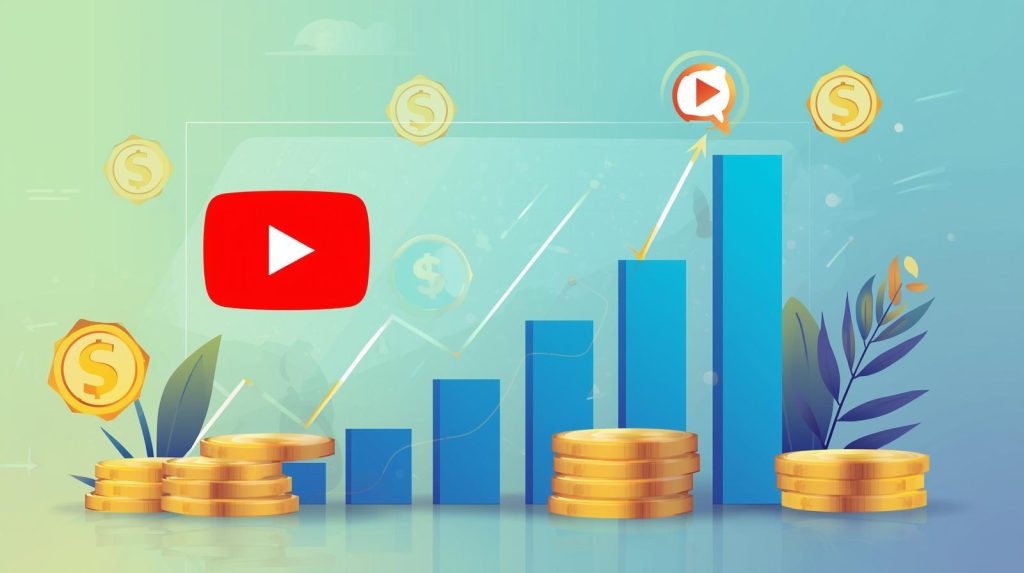YouTube has transformed from a simple video-sharing platform into a full-fledged income opportunity for creators worldwide. Millions of content creators earn money by sharing videos, building communities, and engaging audiences. But if you’re new to the platform, understanding YouTube monetization can feel overwhelming.
In this guide, we’ll walk you through everything you need to know about monetizing your YouTube channel — from eligibility requirements to revenue streams, and actionable tips to maximize your earnings.
Understanding YouTube Monetization
YouTube monetization allows creators to earn money from their content. Once enabled, YouTube shares revenue generated from ads, memberships, Super Chats, merchandise, and YouTube Premium subscriptions with the creator.
The main program enabling monetization is the YouTube Partner Program (YPP). Being part of YPP not only unlocks earning potential but also gives you access to advanced analytics, audience insights, and monetization features.
Why monetize your channel?
- Generate passive income.
- Grow your brand and influence.
- Reward loyal audiences with premium content.
Eligibility Criteria for YouTube Monetization
Before you can earn money, your channel must meet certain requirements. YouTube updated its watch time threshold to 3,000 hours in the past 12 months (down from 4,000). Here’s what you need to qualify:
- 1,000 Subscribers – Build a loyal audience who regularly engages with your content.
- 3,000 Watch Hours – Total hours your videos have been watched in the last 12 months.
- Comply with YouTube Policies – Adhere to community guidelines and monetization rules.
- AdSense Account – Link an approved Google AdSense account to receive payments.
Pro Tip: Avoid copyright strikes and ensure your content is advertiser-friendly. These factors can delay approval or affect monetization eligibility.
Ways to Monetize on YouTube
Once eligible, there are several revenue streams available to creators:
1. Ad Revenue
- Earn money from ads displayed on your videos.
- YouTube shares revenue based on impressions and clicks.
2. Channel Memberships
- Fans can pay a monthly fee for exclusive perks such as badges, emojis, or special content.
3. Super Chats & Super Stickers
- Available during live streams.
- Fans pay to highlight their messages or stickers.
4. Merchandise Shelf
- Sell branded merchandise directly via YouTube’s integrated platform.
5. YouTube Premium Revenue
- Earn a share of revenue from YouTube Premium subscribers who watch your content.
6. Affiliate Marketing & Sponsored Content
- Promote products or services in your videos and earn commissions.
- Partner with brands for sponsored collaborations.
By diversifying revenue streams, creators can maximize earnings and reduce dependency on ads alone.
Setting Up YouTube Monetization
Here’s a step-by-step guide to enable monetization on your channel:
- Sign in to YouTube Studio.
- Go to Monetization in the left menu.
- Review and agree to the YouTube Partner Program terms.
- Connect an approved AdSense account.
- Choose which monetization features you want to enable:
- Ads, memberships, Super Chat, merchandise.
- Submit your channel for review.
Once approved, monetization will be active, and you can start earning revenue from your content.
Tips to Boost Your YouTube Revenue
Earning money on YouTube is not just about enabling monetization — it’s about creating content that performs well.
- Post high-quality, engaging videos consistently.
- Use SEO-optimized titles, descriptions, and tags to improve search visibility.
- Encourage viewers to like, comment, and subscribe to boost engagement metrics.
- Promote videos on social media, blogs, and newsletters to expand reach.
- Regularly analyze YouTube Analytics to identify top-performing content and optimize your strategy.
Remember, the more engaged your audience is, the higher your revenue potential.
Avoiding Common Monetization Issues
Monetization can be affected by several factors. Here’s what to watch out for:
- Copyright Strikes: Avoid using copyrighted music or video clips without permission.
- Ad-Friendly Content: Certain content categories may not be eligible for ad revenue.
- Watch Time & Subscribers: Maintain consistent growth to avoid losing monetization eligibility.
- Denied Monetization: You can appeal if your application is rejected, but ensure all guidelines are met before reapplying.
Following these best practices ensures a smooth monetization process.
Alternative Ways to Earn from YouTube
Even if you’re not yet eligible for YPP, there are ways to earn:
- Affiliate Marketing: Promote products and earn commissions through links in your video descriptions.
- Selling Digital Products or Courses: Offer ebooks, courses, or templates to your audience.
- Membership Platforms: Use Patreon or similar platforms to offer exclusive content.
These strategies help creators generate revenue while building their channels.
Conclusion
YouTube monetization offers creators a tremendous opportunity to turn their passion into income. By understanding eligibility requirements, exploring multiple revenue streams, and optimizing content, you can maximize your channel’s earning potential.

